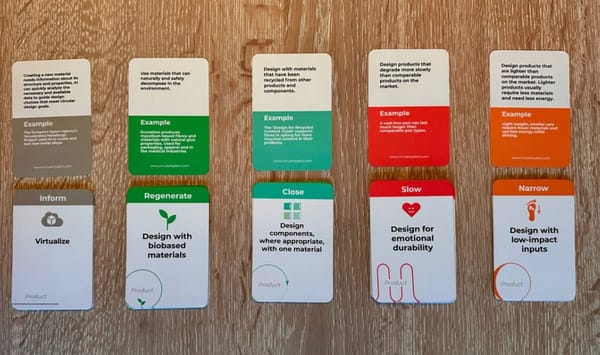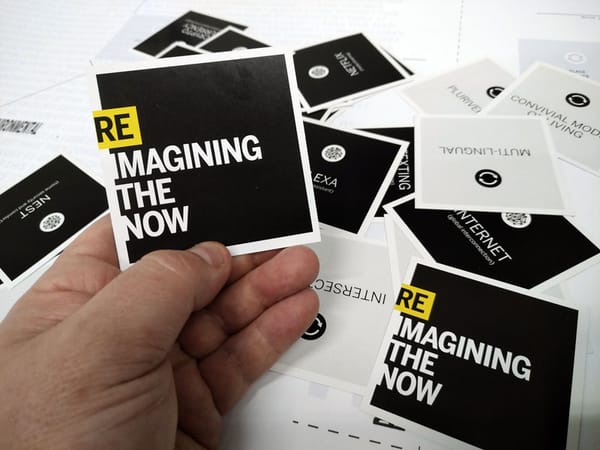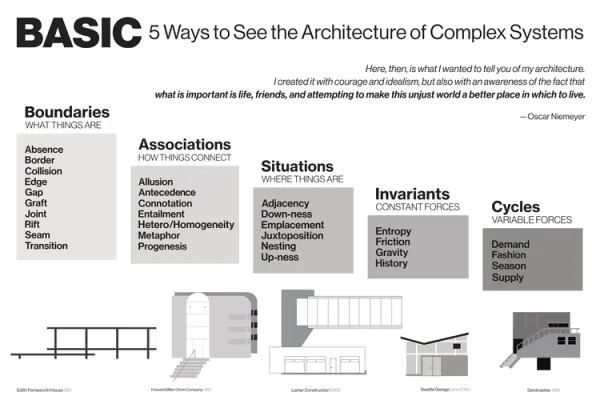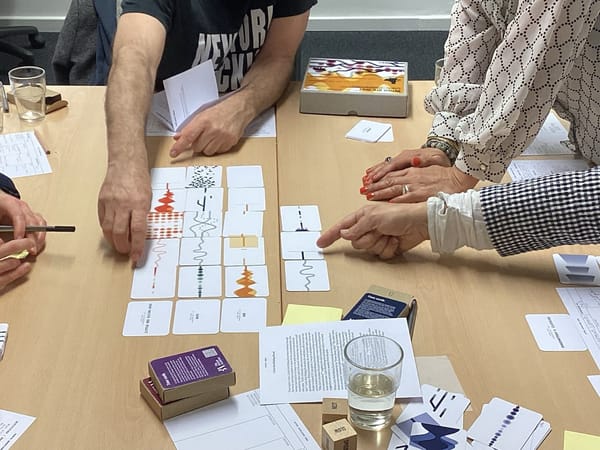№ 104 | Thinking with Card, Visualicious Recipes, Zwicky Box, “Justing vs Butting”, AI Prompt Deck, and Gathering Design Strategies
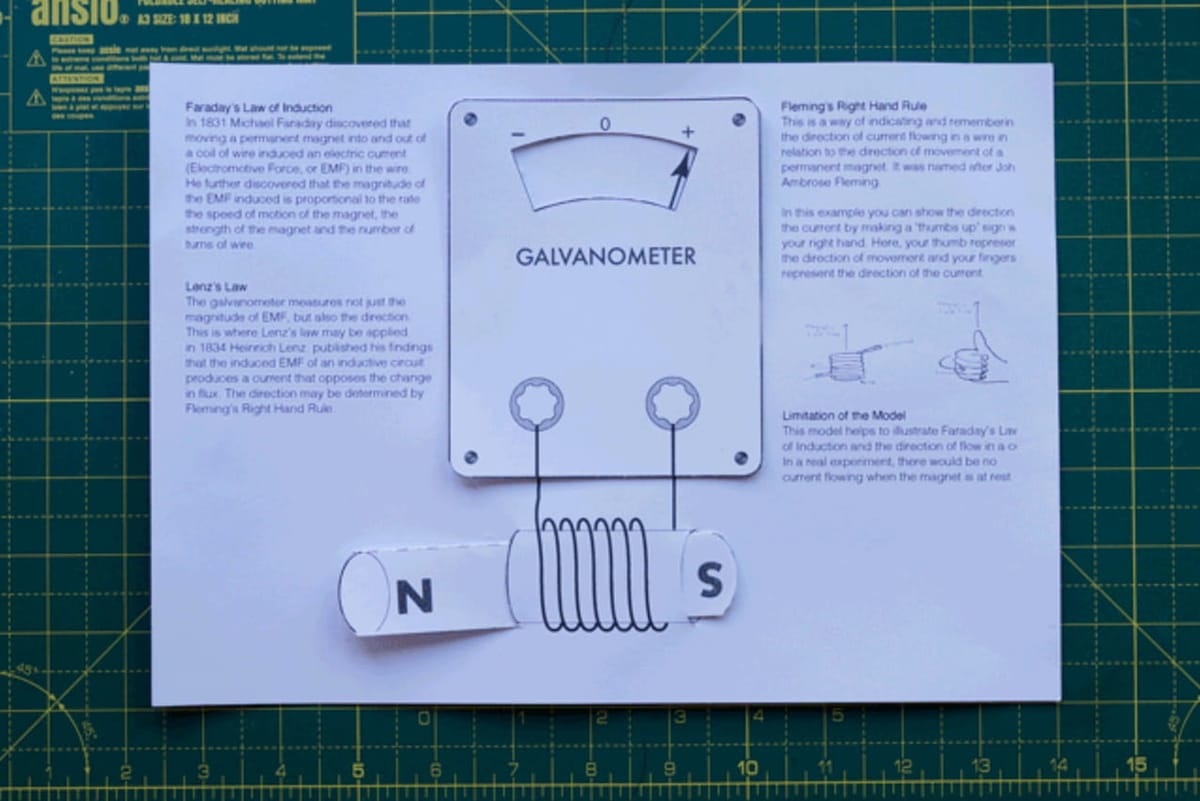
Even MORE playful things to think with and think about.
But first… a special announcement: 🎉
It’s online. It’s free. And, it has an amazing lineup, including a lot of folks I’ve mentioned in past issues of this newsletter.
I’ll be sharing a brand new talk, taking on one of the hardest problems with Visual SenseMaking—what to do with a blank page?! I’ll be skipping past a lot of “Why Visual Thinking is important” preamble, and jumping straight into the practical deep-end, with tips and tricks I’ve found useful for translating fuzzy concepts into clear pictures.
Maybe I’ll see you there?
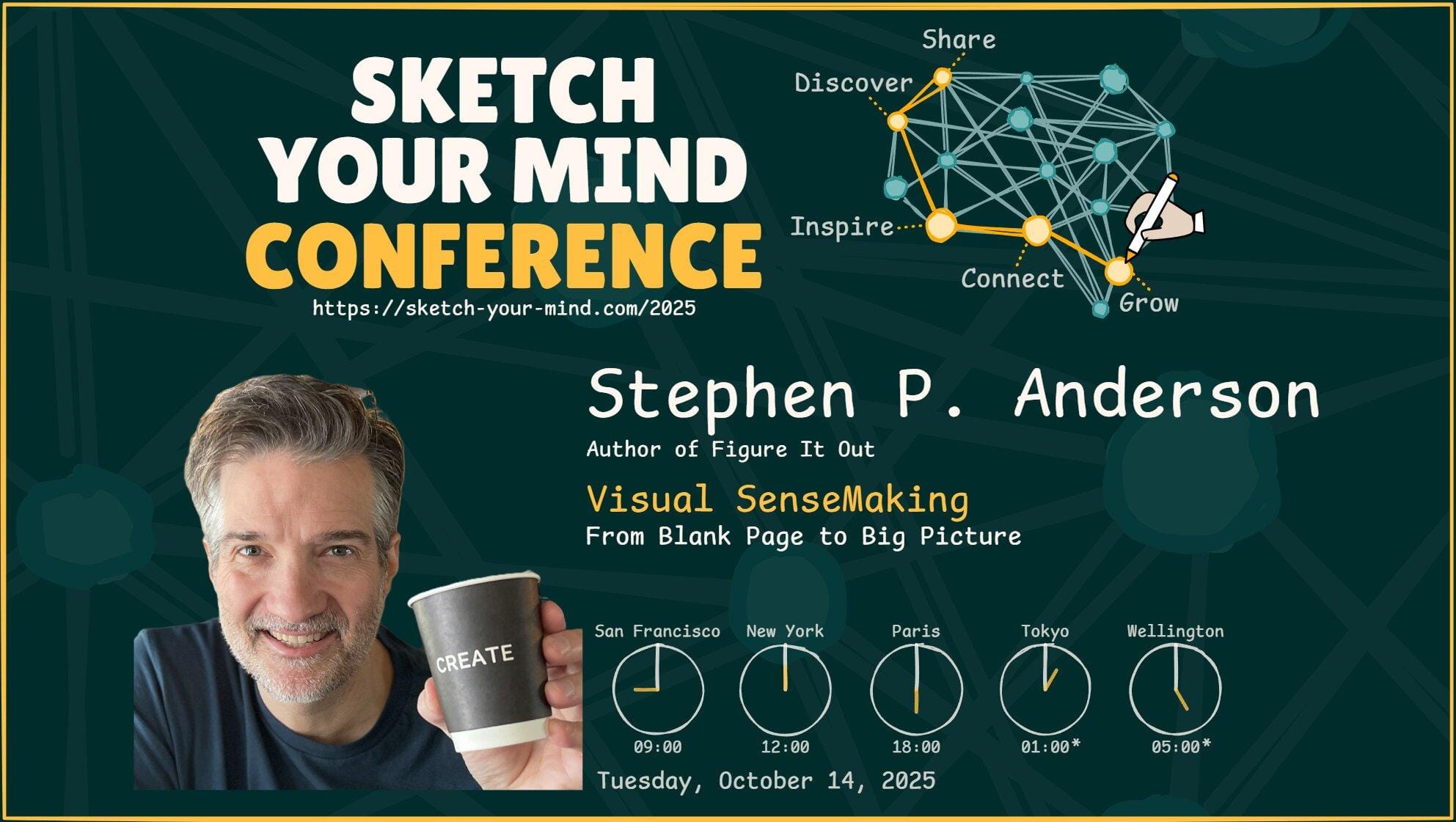
That shared, let’s get on with this 104th edition of the Thinking Things newsletter.
Thinking with Card
By way of the recent PaperCamp conference, comes Thinking with Card. Framed as “a project to encourage learning through making,” this site offers a small collection of downloadable print files, that when printed, cut, folded, and otherwise assembled, result in things like this:
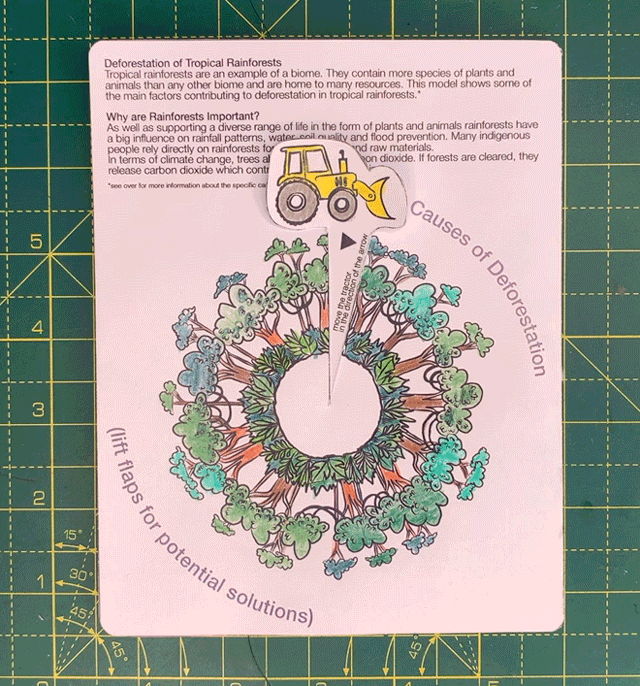
Aimed at students, teachers and parents, the goal is:
To promote active learning through making. These models can help with study, aid with the comprehension of complex ideas and explore topics in a means other than textbooks or screens.
I count 17 models, covering topics like causes of deforestation, fossilization, and how sound waves are converted into nerve impulses.
😍
Visualicious Recipes
So much of cooking, at least for the first few rounds with a new recipe, is about understanding relationships over time. That’s what makes these “Visualicious recipes” so powerful—they illustrate the information that is hidden or unseen in most recipes, what gets added and when. (And, they look like something I’d make! See my post on Making Sense of Making Jjajangmyeon).
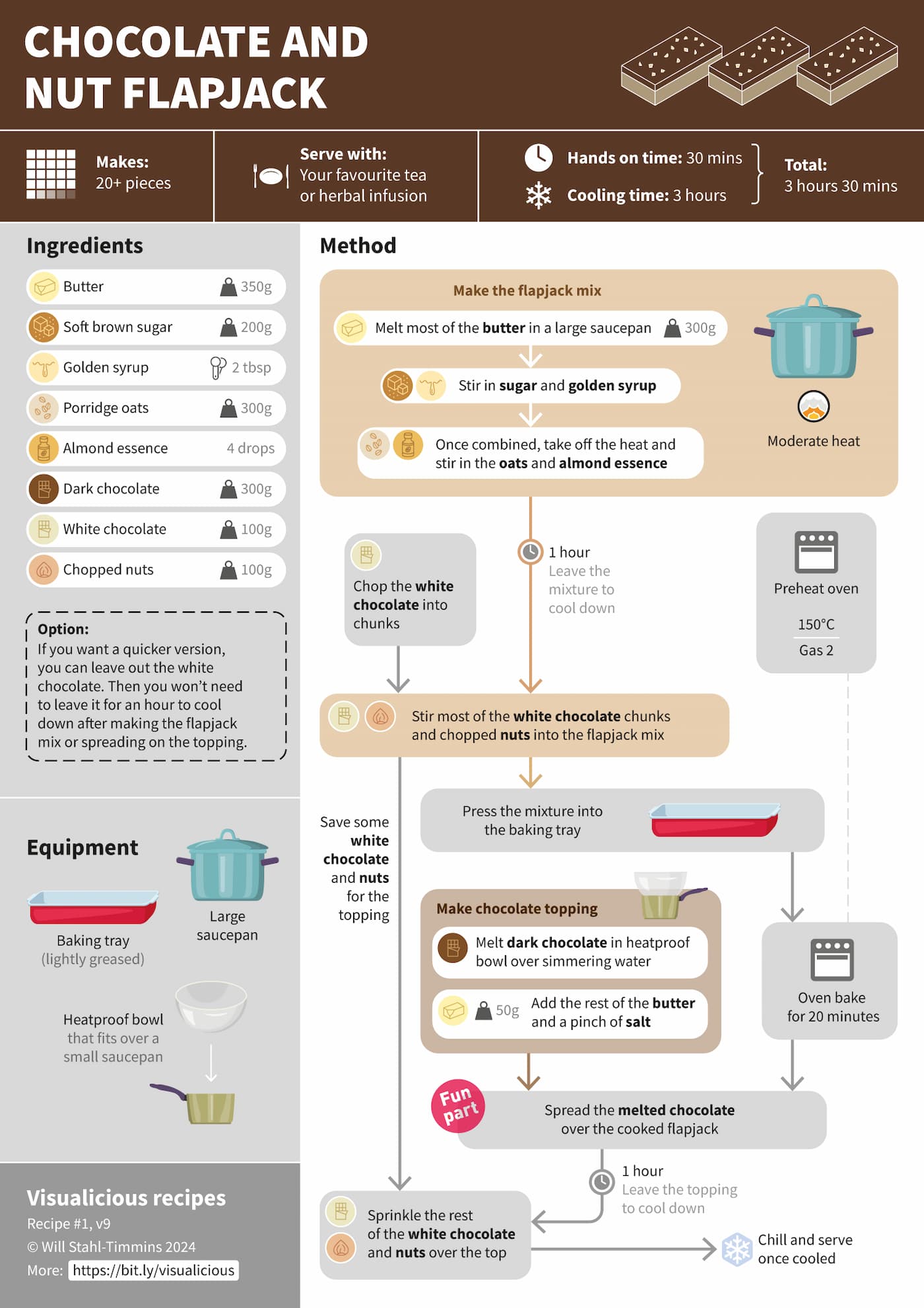
Creator Will Stahl-Timmins has an Etsy store where he sells prints of these recipes, but he’s looking for a book publisher—I hope he finds one. I’d be first in line to buy a copy!
This brought to mind the classic site Cooking For Engineers. While lacking the visual niceties, I’ve long enjoyed how Cooking For Engineers also models (using nested boxes rather than boxes and arrows) the steps in preparing a recipe.
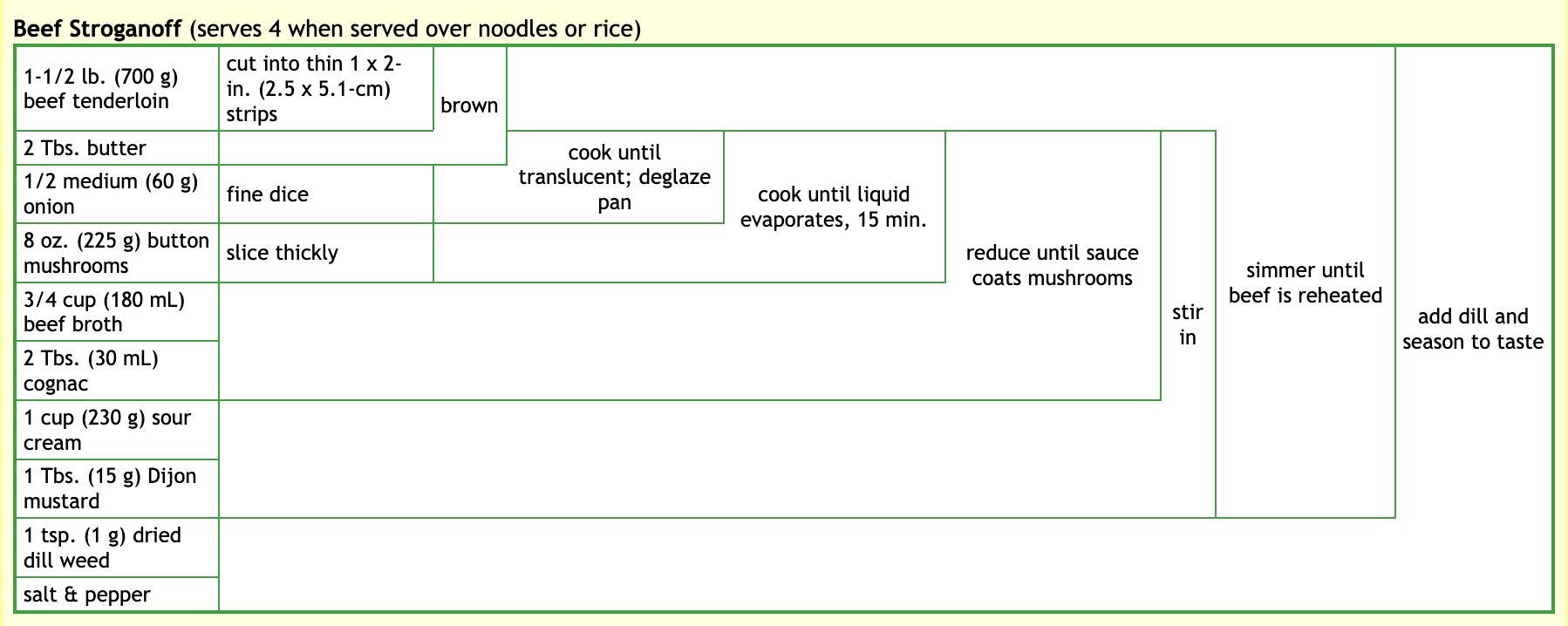
Zwicky Box
Zwicky box?! By way of Oliver Caviglioli, I recently discovered the Zwicky box, though I’m fairly certain I’ve used or even created something similar.
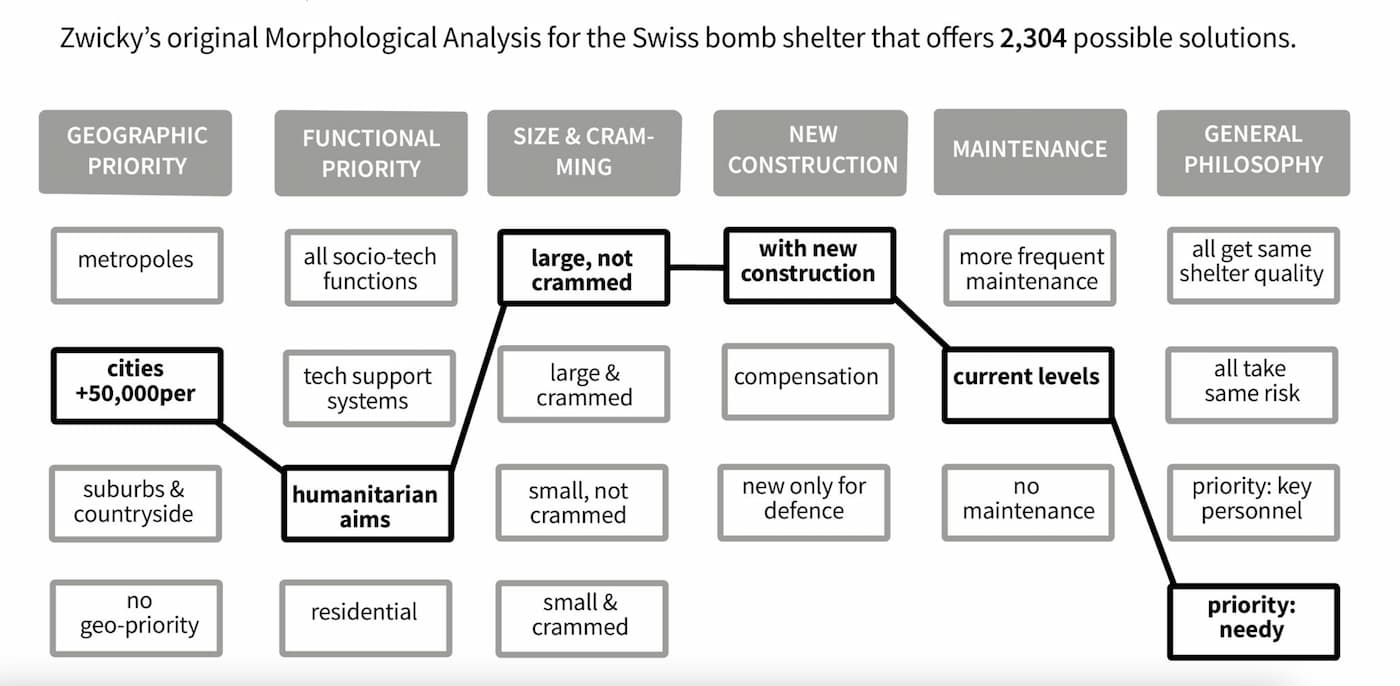
There’s a fantastic explanation over at Ness Labs, which kicks off with this definition:
The Zwicky box is a simple and effective way to create many unique ideas by breaking the problem down into categories, adding values to each category, and combining these values to create unique answers.
After doing the work to define a set of categories and values, you pick one value from each category, resulting in a mashup of concepts. It’s not unlike the formula behind card decks like Steward Candy’s The Thing from the Future, where the card suits represent categories, and each card is a specific value.

“Justing vs Butting"
I love phrases that crisply articulate difficult concepts. From John Cutler (by way of Melissa Perri) comes ‘Justing and Butting’, a great way to characterize most discussions around AI:
Justing is when we oversimplify: “We just need to add AI.” “We just need more urgency.” “We just need to ship faster.”
Butting is the opposite: “But did you consider the privacy implications?” “But what about technical debt?” “But have we thought through user impact?”
Every team I know is stuck ping-ponging between these two extremes right now.
The FOMO around AI has made this worse. Founders and senior leaders are justing (“we just need to catch this wave”), while PMs are butting (“but did you think about...”), and everyone's frustrated because nothing moves forward 😅
The magic happens in the middle → what John calls true agility. Making decisions under uncertainty without losing helpful complexity, but also without spinning in circles forever.
Speaking of “butting…”
AI Prompt Deck?
While I have more concerns than excitement about using generative AI for UX research, I was struck by the idea of using a “handy Prompt Deck to construct the [AI] prompt.” While I’ve seen lots of posts and 1 page cheat sheets for better prompt engineering, the idea of turning the oft-used prompt phrases into a card deck of sorts (not sure from the article if this is literal or conceptual), is an idea I haven’t been able to shake. Hence, I’m sharing it here!

Finally…
Gathering Design Strategies
Is there a set of principles, strategies, and tips that anyone can use to design more impactful gatherings? 🧐
—Anamaria Dorgo
That is the question that the Gathering Design Strategies project seeks to answer. The result? 9 principles (and elaboration for each) to consider when designing a gathering. The principles (listed below), are all great considerations, though they do seem to favor co-creation types of events.
🎨 Power of Creation
🌱 Thriving Inside Out
🧭 Gathering Experience Ownership
✨ Emergence
🚪 Generous Exclusion
🗺️ Build Your Own Adventure
🧘♀️ Wellbeing in Focus
🔗 Make it Last
🔥 Intentional Friction
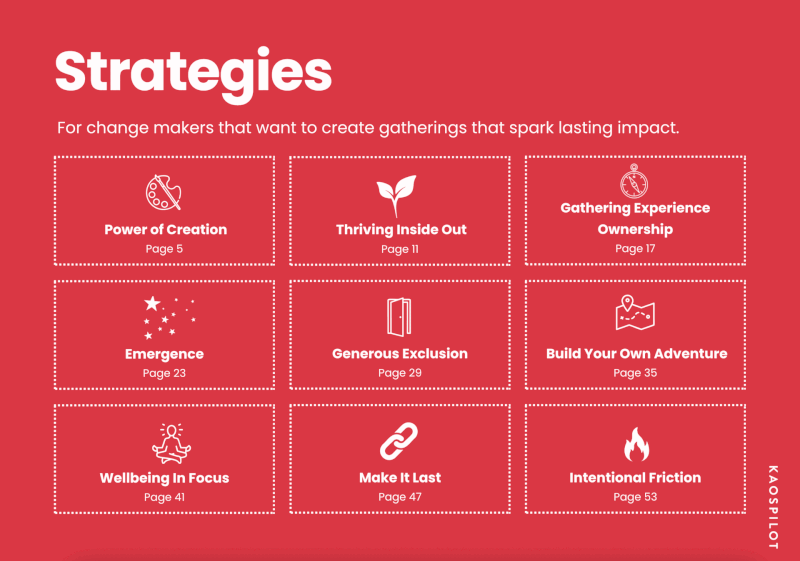
The fifth principle, “Generous Exclusion” immediately brought to mind Priya Parker’s writing on this topic in her book The Art of Gathering. Which… leads me to wonder how might the 9 principles identified here map to Priya Parker’s framework for designing gatherings… 🤔
Random FUN Stuff:
- This visual history of chessmen offers a lovely timeline of chess set designs through history.
- I’m loving the retro vibes of the Megazoid font.
- This mind blowing video of glass vs hydraulic press led to me learning all about The Mystery of Prince Rupert's Drop.
- How would you draw ‘jumping to conclusions’ or ‘planting doubt’? Those are two of 30 challenges from Eva-Lotta Lamm’s ‘viztober’ challenge, where each day in October you’re invited to illustrate a common metaphor. ✏️


